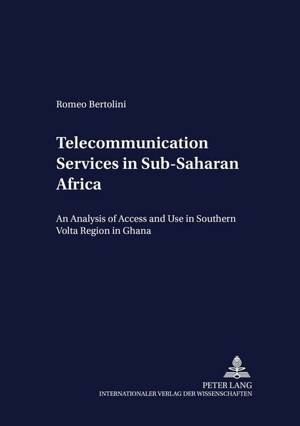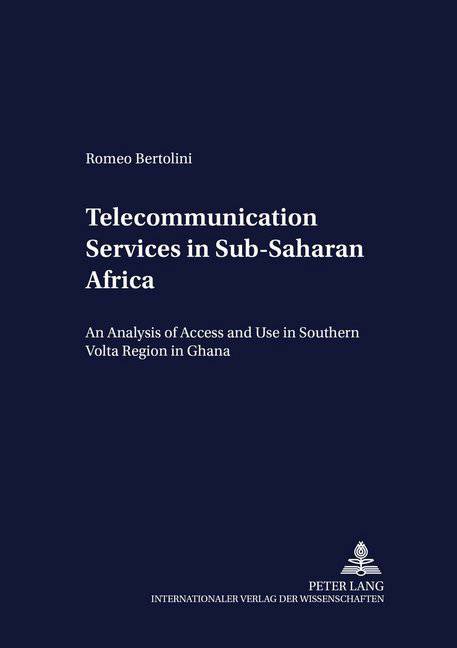
- Afhalen na 1 uur in een winkel met voorraad
- Gratis thuislevering in België vanaf € 30
- Ruim aanbod met 7 miljoen producten
- Afhalen na 1 uur in een winkel met voorraad
- Gratis thuislevering in België vanaf € 30
- Ruim aanbod met 7 miljoen producten
Zoeken
Telecommunication Services in Sub-Saharan Africa
An Analysis of Access and Use in the Southern VOLTA Region in Ghana
Romeo Bertolini
€ 58,95
+ 117 punten
Omschrijving
In order to show how rural households use - and benefit from - publicly available telecommunication services, determinants and degree of the use of public telephone facilities have been analysed. The results of the empirical assessment in three villages in Southern Ghana show the considerable catchment area of the services and the high penetration of use within the communities that had the services in place or were close-by. Additionally, the research uncovers that people are willing to take high costs in terms of time and money into account in order to be able to utilise the communication services. The multivariate analysis of the determinants of service use on the household and the personal level indicates that there is high hidden demand and that this demand is by no means limited to the economically wealthy and active. However, user rates are particularly low amongst women, illiterates, and people living in significant distance to public service facilities.
Specificaties
Betrokkenen
- Auteur(s):
- Uitgeverij:
Inhoud
- Aantal bladzijden:
- 186
- Taal:
- Engels
- Reeks:
- Reeksnummer:
- nr. 26
Eigenschappen
- Productcode (EAN):
- 9783631391617
- Verschijningsdatum:
- 18/07/2002
- Uitvoering:
- Paperback
- Formaat:
- Trade paperback (VS)
- Afmetingen:
- 148 mm x 210 mm
- Gewicht:
- 259 g

Alleen bij Standaard Boekhandel
+ 117 punten op je klantenkaart van Standaard Boekhandel
Beoordelingen
We publiceren alleen reviews die voldoen aan de voorwaarden voor reviews. Bekijk onze voorwaarden voor reviews.











